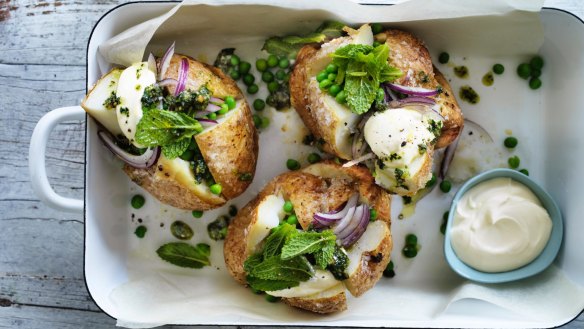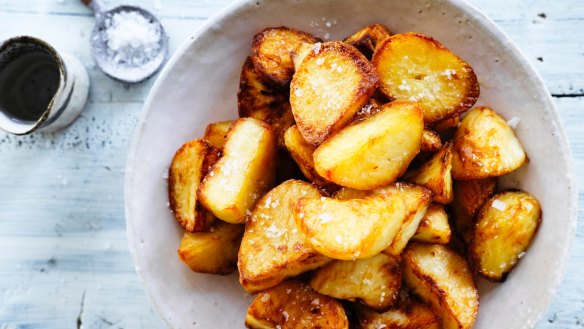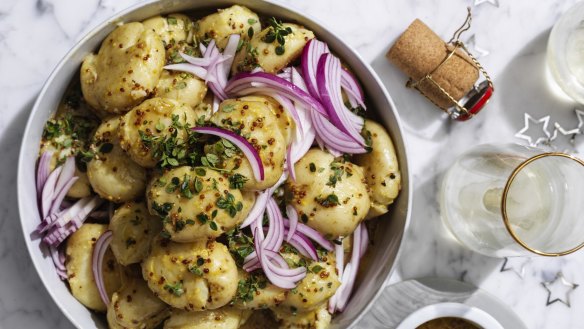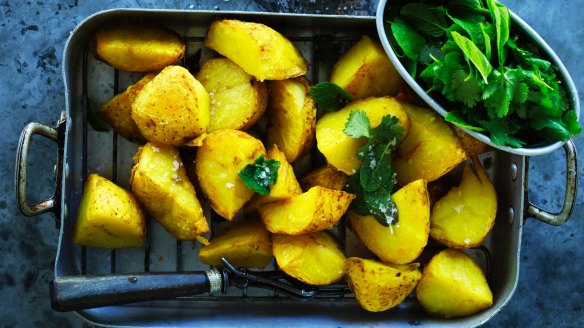Do potatoes really deserve their unhealthy reputation?

The potato, a dietary staple across many cultures, is a nightshade vegetable that's frequently tainted as a vegetable to avoid. Its crime? A perceived high carbohydrate content, the very reason it has served as a nutrient-rich staple for so long.
A closer look at the nutritional make-up of a potato, though, reveals that we have probably been a little harsh by banishing the potato from our nightly vegetable line-up.
This is especially true when you consider that if we consumed potatoes the way nature intended, it would be hard to find anything except praise for this natural form of nourishment.

Here are a few reasons the potato deserves pride of place at your table a little more often.
From a nutritional perspective, spuds tick a number of boxes – rich in dietary fibre (when the skin is consumed), vitamin C, potassium, folate and B group vitamins.
For potatoes to be eaten as part of a healthy diet, they need to be enjoyed in as natural a state as possible.
Potatoes are a indeed a rich source of carbohydrates, with 20-30g per each average-sized potato (roughly equivalent to a couple of slices of bread). This is still much lower than other carbohydrate-rich foods such as pasta and rice, which contain 45g and 60g of carbohydrate respectively per cup-sized serve.
Specifically, it is the high-glycaemic index of potatoes, especially when potato is eaten without the skin or mashed, that has been a nutrition talking point, with high-GI foods associated with higher blood glucose levels.

But it's important to know that not all potatoes have a high GI, and simply eating potatoes with their jacket on, or opting for smaller potatoes helps to counteract this effect.
Cooling potatoes before eating has also been shown to further lower the GI, whilst boosting the resistant starch content, known for its gut-health-related benefits.
What is less commonly known about potatoes is that they are rated as one of the most filling of all carbohydrate-rich foods, with studies showing that individuals eat fewer kilojoules overall when a whole potato is included as part of a balanced meal.
While Australians eat plenty of potatoes, more than 60 kilograms per person per year, the main issue is that most of the potato we do eat is eaten as chips or potato-based snacks.
Nutritionally, there is little positive that can be said about potatoes that have been deep fried or processed into snack foods.
For potatoes to be eaten as part of a healthy diet, they need to be enjoyed in as natural a state as possible. As mashed potato is generally made using potatoes without their skin, along with loads of butter and salt, this is not the ideal way to eat potato if the goal is to maximise nutrient intake.
For those who like to keep a close eye on their carb intake, there is also a range of lighter potatoes available in supermarkets, which contain 25 per cent less carbohydrate. A mix of two different types of potatoes, Spud Lites retain all the flavour of your favourite potato and are available in regular and baby spud sizes.
Without a doubt, the best way to enjoy potatoes is whole, baked, steamed or boiled, and to opt for a size that is no larger than a tennis ball. If weight or carb control is your thing, choose smaller or lower carb spuds when you can.
If you love your spuds mashed, mix with other vegetables such as pumpkin or cauliflower to boost the fibre content overall and lower the carb content, and use extra virgin olive oil rather than butter to flavour up your mash.
Or if you love nothing more than some homemade chips, cook them using extra virgin olive oil and leave the skin on where possible.
Nutritionally, one of the smartest ways to use potatoes is as a filling, satisfying lunch option. Cook them in a microwave and fill with tuna or leftover mince, cheese and serve with salad.

Which potato for what?
Russet: The most common type of potatoes, russets are versatile and enjoyed baked, roasted, mashed or made into chips.
Kestral: With bright purple dots on their skin, not only do kestrals taste sweet but you get extra antioxidants thanks to the presence of anthocyanin.
Kipfler: Long in shape, kiplers are best roasted and are a great option for stuffing as a filling lunch.
Dutch cream: Rich in flavour and with slightly yellow flesh, dutchies are perfect for mashing.
Chat: These are small, round potatoes. Their small size makes them perfect for those looking to control their carbohydrate intake but who still love their spuds.
Desiree: With red skins and yellow flesh, desirees are good for salads or to cut into homemade chips.
Susie Burrell is a nutritionist and dietitian.
The best recipes from Australia's leading chefs straight to your inbox.
Sign up